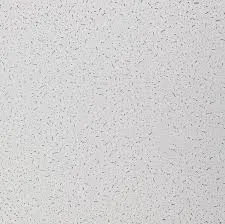10 月 . 13, 2024 22:07 Back to list
Ceiling Access Covers for Improved Space Management and Safety Solutions
Understanding Ceiling Access Covers A Practical Guide
Ceiling access covers may not be the most glamorous aspect of building construction or interior design, but they serve critical functions in maintenance and aesthetics. These specialized fixtures allow easy access to hidden utilities or systems within ceilings, such as electrical wiring, plumbing, HVAC systems, and fire safety equipment. As such, they play a vital role in ensuring that buildings remain functional and safe.
What is a Ceiling Access Cover?
A ceiling access cover is a panel that provides entry to areas above ceilings without requiring major structural alterations. These covers come in various forms, sizes, and materials, designed to blend seamlessly into the ceiling or to be easily identifiable for quick access. They can be made of metal, plastic, or drywall, and may feature various finishes to match the surrounding surface.
Types of Ceiling Access Covers
1. Flush-Mounted Covers These covers are integrated into the ceiling, providing a seamless look. They are ideal for areas where aesthetics are paramount, such as in residential settings or high-end commercial spaces.
2. Drop-In Covers Designed to fit into grid ceilings, these covers sit within the tiles, allowing easy removal for access. They are commonly used in corporate offices or schools, where maintenance personnel need frequent access.
3. Lockable Covers For areas requiring security, lockable access covers provide a barrier to unauthorized entry while still allowing maintenance personnel to perform necessary repairs.
ceiling access cover

Benefits of Ceiling Access Covers
1. Easy Maintenance One of the primary benefits of ceiling access covers is the convenience they provide for maintenance and repairs. Instead of having to dismantle areas of the ceiling, technicians can quickly enter the required space, saving time and labor costs.
2. Improved Safety With easy access to essential systems, building managers can ensure that inspections and repairs are performed regularly. This can prevent potential hazards, such as electrical failures or plumbing issues, from escalating into more severe problems.
3. Aesthetic Appeal High-quality ceiling access covers can enhance the overall appearance of a setting. They can be designed to be virtually invisible or, conversely, to stand out as a design feature, depending on the homeowner's or designer’s preferences.
4. Regulatory Compliance Many building codes and safety regulations require access to systems and utilities for regular inspections. Ceiling access covers facilitate compliance with these rules, ensuring that buildings meet legal safety standards.
Installation Considerations
When installing ceiling access covers, several factors should be considered. The location of the cover is critical; it should provide access to the necessary systems while avoiding interference with any structural elements. Additionally, the size of the cover must correspond to the types of equipment it is meant to service. Professional installation is often recommended to ensure that the cover is securely fitted and does not compromise the integrity of the ceiling.
Conclusion
In summary, ceiling access covers are essential components in the realm of building management and design. They provide critical access for maintenance and inspections while contributing to safety and aesthetic values. Selecting the right type of ceiling access cover tailored to specific needs is key in maximizing the functionality of a space. Whether in commercial or residential settings, investing in quality access covers is undoubtedly a wise decision that pays dividends in safety, maintenance, and design coherence. As buildings evolve with new technologies and regulations, the importance of these often-overlooked features will continue to grow, paving the way for better building management practices.
-
Revolutionizing Interior Design with Ceilings t grid Suspended SystemNewsOct.29,2024
-
Revolutionizing Ceiling Design with ceiling access panel with Gypsum Tile WaterproofNewsOct.29,2024
-
Revolutionizing Interior Design with PVC Gypsum Ceiling: A Comprehensive GuideNewsOct.29,2024
-
Elevating Interior Design with High quality Mineral Fiber Ceiling TilesNewsOct.29,2024
-
Revolutionizing Interior Design with PVC Gypsum Ceiling: A Comprehensive GuideNewsOct.29,2024
-
Elevating Interior Design with High-Quality Mineral Fiber Ceiling Tiles: A Comprehensive GuideNewsOct.29,2024







